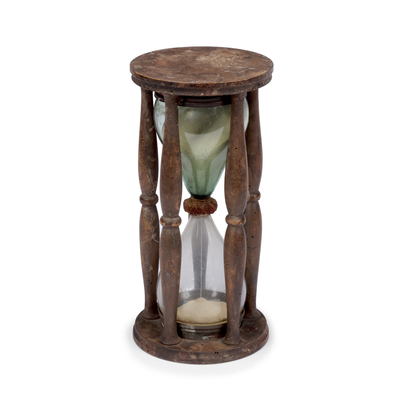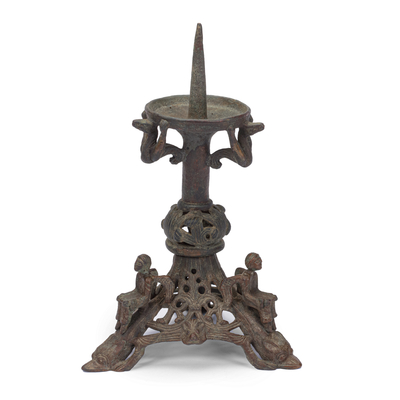Table cover, tapestry
Global shipping available
- Origin
- Probably Delft or Gouda, Netherlands
- Period
- Mid 17th century
- Material
- Wool and silk
- Height
- 173 cm
- Width
- 258 cm
- Literature
V. Woldbye & C.A. Burgers, Geweven boeket - Catalogus Rijksmuseum Amsterdam, Amsterdam 1971, pp. 5 - 12, cat. no. 19, 26, 27, 56, 57.
Questions about this object?
Please use one of the contact options below:
Description
This woven woollen tablecloth seems to be sprinkled with flowers; on a dark blue background, numerous exuberant flowers can be seen, either tied together with a bow or separately. In the centre is a central bouquet of fruit, flowers and leaves, in which grapes, pears, cucumbers, artichokes, rose hips and pomegranates can be recognised. Between the flowers and leaves, which are facing in all directions, various insects are visible. In the corners of the garment are bouquets of flowers tied together with a red ribbon, at the sides are roses tied together with a blue ribbon. Around the central ornament is a circle of tulips. Northern Netherlandish flower tablecloths from the seventeenth century are extremely rare; the number of known tablecloths, in museums and private collections, is no more than fifty. These tablecloths depict a lively wealth of flower species, often including the tulip, rose, iris, narcissus, carnation, chrysanthemum, lily of the valley and imperial crown, inspired by the tulip mania and the awakened interest in natural science and botanical publications. The tablecloths decorated the heavy and functional tables characteristic of the seventeenth century, but were not used for actually setting the table and eating: the precious tablecloths were covered with several sheets.
From the middle of the sixteenth century and especially after the Fall of Antwerp, a large stream of Flemish immigrants, including many craftsmen, came to the Northern Netherlands. Among these immigrants were a number of tapestry weavers who settled in Middelburg, Delft, Gouda and Schoonhoven, where the rich Flemish weaving tradition blended with the prevailing Northern Netherlandish art tradition. The rare floral tablecloths were mainly made in the workshops in Delft and Gouda, it is likely that this tablecloth also originated in Delft or Gouda. Important ateliers belonged to the families Van der Gucht, Spiering, Schaep, Goossens and De Cracht. The weaving of carpets and rugs has both a technical and an artistic side; based on a sketch by the artist, the weaver made the rug. The sketch on cardboard was often inspired by existing prints. Different carpets have the same and recurring motifs, which may point to the same workshop, the same cardboard or the same example.
The exotic tulip, imported from Turkey in the second half of the sixteenth century, caused the well-known 'tulip mania' in the course of the seventeenth century. The unusual and new species were favourite subjects of artists and craftsmen, who incorporated the graceful flowers into their work. The flourishing of natural sciences, with scientists such as Van Leeuwenhoek and Huygens, resulted in various books and treatises with botanical prints, which were used as examples and inspiration for these flower tablecloths. The flowers are botanically correct, but form a whole in colour and style. Some of the preserved Dutch tablecloths have a medallion or biblical motif in the centre, while others depict only flowers.





